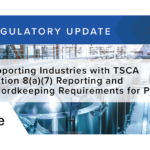
When it comes to understanding the potential environmental impact of a site, conducting a Phase 2 Environmental Site Assessment is crucial. In the case of Port Arthur, this assessment plays a significant role in evaluating any existing contamination and identifying potential hazards. By employing a comprehensive and systematic approach, the Phase 2 Environmental Site Assessment provides valuable insights that are essential for making informed decisions about remediation, monitoring, and preventive measures.
Understanding the Scope of Phase 2 Environmental Site Assessment
The Phase 2 Environmental Site Assessment goes beyond the initial screening and evaluation of a site. Its purpose is to determine the extent of contamination, assess the associated risks, and propose appropriate remediation strategies. By conducting environmental sampling, testing, and analysis, this assessment aims to provide a more in-depth understanding of the site’s condition.
When delving into the realm of Phase 2 Environmental Site Assessment, it is crucial to recognize the multifaceted nature of the process. This phase involves not only the physical examination of the site but also delves into historical records, previous land uses, and potential sources of contamination. By amalgamating these diverse sources of information, a comprehensive picture of the site’s environmental status emerges, guiding decision-makers towards informed choices.
The Importance of Phase 2 Environmental Site Assessment
Phase 2 Environmental Site Assessment is a critical step in the environmental due diligence process. It helps stakeholders, such as property owners, developers, and regulators, make informed decisions about the site’s future use. By identifying potential environmental hazards, the assessment ensures that proper steps are taken to protect human health and the environment.
Moreover, the significance of Phase 2 Environmental Site Assessment extends beyond the immediate site boundaries. It plays a pivotal role in safeguarding surrounding communities and ecosystems from the far-reaching implications of contamination. Through a meticulous examination of soil, water, and air quality, this assessment acts as a shield against the insidious threats posed by environmental pollutants.
Key Components of Phase 2 Environmental Site Assessment
A Phase 2 Environmental Site Assessment consists of several key components that contribute to a comprehensive evaluation of the site. These components include:
- Primary data collection
- Site-specific analysis and testing
- Environmental risk assessment
The detailed information obtained from these components enables the identification of contamination levels, potential hazards, and the impact on the local ecosystem and biodiversity.
Furthermore, the process of environmental risk assessment within Phase 2 delves into the intricate web of interactions between contaminants and environmental receptors. By evaluating factors such as toxicity, exposure pathways, and ecological sensitivity, this assessment not only quantifies risks but also lays the groundwork for tailored remediation strategies. Through this holistic approach, Phase 2 Environmental Site Assessment serves as a beacon of environmental stewardship, guiding responsible actions towards a sustainable future.
The Process of Conducting a Phase 2 Environmental Site Assessment in Port Arthur
The process of conducting a Phase 2 Environmental Site Assessment in Port Arthur typically involves the following steps:
Initial Site Inspection and Data Collection
The first step in the assessment process is an initial site inspection, where experts collect data about the site’s history, previous land use, potential sources of contamination, and surrounding environmental conditions. This information serves as a foundation for further investigation and analysis.
During the initial site inspection, environmental consultants may also conduct interviews with current and previous property owners, review historical aerial photographs, and examine local geological maps to gain a comprehensive understanding of the site’s environmental context. This thorough data collection process helps in identifying any red flags or areas of concern that require closer examination during the assessment.
Laboratory Testing and Analysis
Once the initial data is collected, samples are taken from various mediums, such as soil, air, and groundwater, and sent to a laboratory for detailed testing and analysis. This analysis helps identify and quantify the presence of contaminants and determines their potential risks.
Furthermore, the laboratory testing may involve advanced techniques such as gas chromatography-mass spectrometry (GC-MS) or high-performance liquid chromatography (HPLC) to detect trace amounts of hazardous substances that could pose a threat to human health and the environment. The precise analysis of these samples is crucial in understanding the extent of contamination and formulating an effective remediation plan.
Risk Assessment and Evaluation
The final step involves a thorough risk assessment, where the collected data is analyzed to evaluate the potential impact on human health and the environment. This assessment considers factors like exposure pathways, toxicity levels, and regulatory guidelines to determine the severity of the contamination and the necessity for remediation.
Moreover, the risk assessment phase may also include a human health risk assessment (HHRA) and an ecological risk assessment (ERA) to assess the potential risks to both human populations and local ecosystems. By integrating data from the site inspection and laboratory analysis, environmental professionals can make informed decisions regarding the appropriate remedial actions needed to mitigate any identified risks effectively.
Findings from the Port Arthur Phase 2 Environmental Site Assessment
Based on the Phase 2 Environmental Site Assessment conducted in Port Arthur, several important findings were identified:
Soil and Groundwater Contamination Levels
The assessment revealed varying levels of contamination in the soil and groundwater. Specific contaminants, such as [specific contaminant], were found to exceed regulatory standards, raising concerns about potential health risks for both humans and local ecosystems.
Potential Environmental Hazards Identified
Moreover, the assessment identified potential environmental hazards like [specific hazard]. These hazards pose a threat to the natural habitat and sensitive ecosystems in the surrounding area, necessitating prompt remediation measures to prevent further damage.
Impact on Local Ecosystem and Biodiversity
The Phase 2 Environmental Site Assessment further highlighted the impact of contamination on the local ecosystem and biodiversity. The presence of contaminants can harm aquatic life, plants, and animals in the affected area, disrupting the delicate balance of the ecosystem. This calls for targeted restoration efforts to mitigate the adverse effects.
Recommendations and Remediation Strategies
Based on the findings of the Phase 2 Environmental Site Assessment, recommended remediation strategies and preventive measures for future contamination were proposed:
Proposed Cleanup and Remediation Methods
To address the identified contamination and hazards, specific cleanup and remediation methods were recommended. These methods may include soil excavation, groundwater treatment, and soil amendment techniques. Implementing these strategies will help mitigate the risks and restore the site to a safe and healthy condition.
Preventive Measures for Future Contamination
Alongside the cleanup efforts, it is crucial to implement preventive measures to minimize the risk of future contamination. This includes adopting best practices for waste management, ensuring proper containment systems, and implementing regular monitoring procedures. By preventing contamination at its source, the long-term integrity of the site can be preserved.
Monitoring and Maintenance Plans
Continuous monitoring and maintenance plans should also be established to ensure the effectiveness of the implemented remediation strategies and preventive measures. Regular monitoring of soil and groundwater quality, as well as ongoing maintenance of containment systems, will provide ongoing assurance of the site’s environmental safety and reduce the potential for future contamination.
In conclusion, the Phase 2 Environmental Site Assessment in Port Arthur is an essential step in evaluating the potential environmental impact of a site. By conducting a thorough assessment and implementing appropriate remediation and preventive measures, the contaminated site can be restored to a safe and healthy environment, protecting both humans and the ecosystem. Through this comprehensive approach, stakeholders can make informed decisions for the sustainable development and future use of the site.
If you’re facing the complexities of a Phase 2 Environmental Site Assessment in Port Arthur or any other location, ESE Partners is your go-to expert for navigating these challenges. With our extensive experience in environmental engineering and science, we are dedicated to responsibly moving your business forward through innovative and sustainable environmental solutions. Our team is equipped to handle all aspects of your environmental needs, from due diligence to remediation, and compliance to natural and cultural resources. Don’t let changes in regulatory processes slow you down; let us expedite your project with our expertise. Request A Proposal today and partner with ESE Partners for a future where your business and the environment can thrive together.








